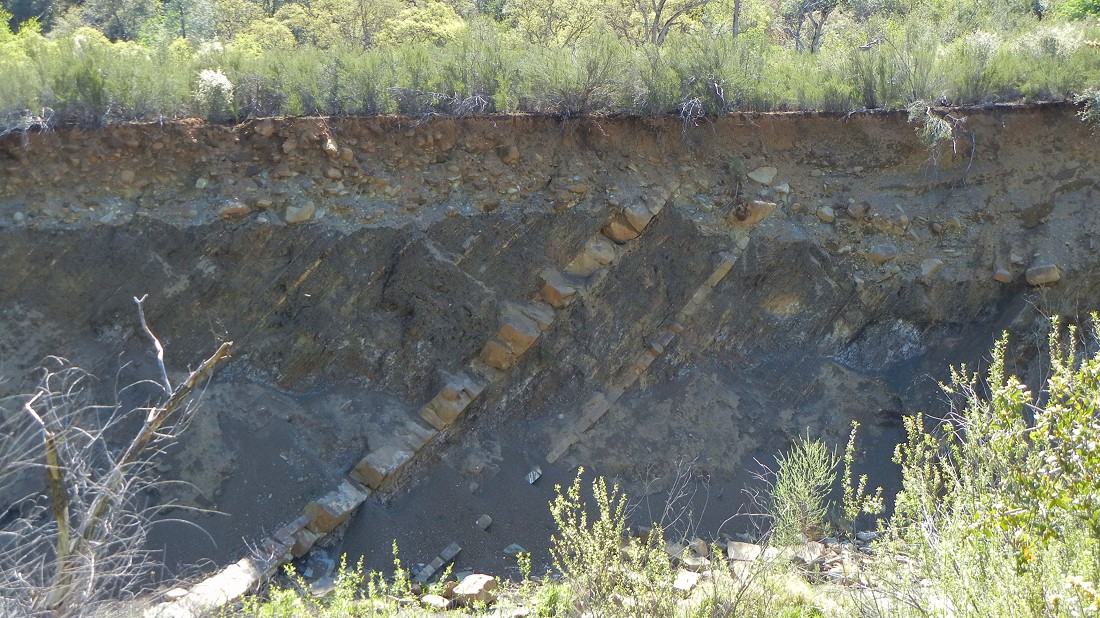Pluto and Charon, Globalising Geoscience, the Anthropocene issue, the World Stress Map calling for updates – and much more. Today is Friday and here are your links!
New Horizons flyby: Pluto and Charon
The New Horizons flyby dominated the scientific news this week – with many of us admiring the images of the dwarf planet Pluto and its not-so-small moon Charon. The Telegraph features Robert Massey summarising what we’ve learned so far (!), as much more data is being transferred to the Earth. NASA is about to release new images today in a TV briefing.
Geologic Highlights of California’s New National Monument
A “large swath of the Coast Range land will become the Berryessa Snow Mountain National Monument pleased a lot of people, including lovers of rocks. The park displays signs of a long sequence of dramatic geologic activity including the clash of tectonic plates, extensive volcanism and the wrenching of modern earthquake faults.” by Andrew Alden on KQED Science.
Globalising Geoscience – an editorial and a review
“Developing countries lag far behind, in terms of scientific — including geoscience — output. Failing to spread the know-how means that the world is missing out on great intellectual potential.” from the editorial ‘Globalize Geoscience’ in Nature Geoscience 8 (491) and the review by Joel Gill on the EGU Blogs, saying “[Strengthening scientific capacity] does not just involve changes in the developing world, but should start with changes in many of our own institutions and individual practice – improved data sharing and more efforts to encourage co-authorship with scientists at host institutions that we work with overseas. If individual commitment to capacity building can occur in parallel with well-informed, -designed and -delivered larger-scale projects – progress in both socio-economic and scientific development can accelerate.”
(HT @ekh_rocksci)
Glacial Earthquakes May Help Forecast Sea-Level Rise
“A new study elucidating the quakes’ mechanics may give scientists a way to measure ice loss remotely, and thus refine predictions of future sea-level rise.”, news by the Lamont-Doherty Earth Observatory about Murray et al., published in Science.
Anthropocene ‘wars’
Have you read the letters in Science this week?
“Holocene as Anthropocene“, by Certini and Scalenghe,
“Geological evidence for the Anthropocene“, by Lewis and Maslin (HT below), and
“Geological evidence for the Anthropocene — Response“, by Ruddiman.
By the way, with less geology, but more arts and humaities, the HKW Berlin (“House of the Cultures of the World”) invites you to their very own way of dealing with the Anthropocene:
CALL FOR APPLICATIONS
Deadline: September 1, 2015
“How did modernity end up in the Anthropocene? How did the twentieth century succumb to a Möbius strip of technics and nature wherein cause and effect, local and global, human and nonhuman, perpetually confuse and confound one another’s distinctions? […] The Anthropocene Campus to be held from April 15 to 23, 2016 at Haus der Kulturen der Welt (HKW) in Berlin will shed light on the technosphere, taking up the challenge of describing, understanding, and more consciously shaping the dynamic sphere wherein geological forces confront the forces of humanity, technology, culture, life, and industry in the twenty-first century.”
(HT Liona Neubert, HKW)
Career progress, advice and opinions
…with “Losing the joy – the love/hate nature of doing a PhD“, by Hazel Gibson,
“Getting noticed is half the battle“, by Eleftherios Diamandis, and
“Workaholism isn’t a valid requirement for advancing in science” by Bryan Gaensler.
The World Stress Map calls for updates
The World Stress Map turns 30 next year, enough reason to prepare a new WSM database release in 2016. The guardians of the WSM project at GFZ Potsdam hence invite for new input. From the July 2015 newsletter:
“Next year the World Stress Map project will celebrate its 30th anniversary after its initialization in 1986 as a project of the International Lithosphere Program headed by Mary-Lou Zoback. The last WSM database release dates back to 2008 and since then we have globally compiled a large number of new stress data records. Thus, we plan to present a new WSM database release during the EGU General Assembly in Vienna 2016 (17th-22nd of April).
We are currently compiling data from earthquake catalogues, literature and international partners from industry and academia, as well as from a large number of own stress data analysis projects that focus on borehole logging data (> 3,000 boreholes). Thus, the increase of data records for the WSM 2016 is substantial (> 9,000); nevertheless each additional data record from you is also important.
If you want to include your data in this new WSM release, please send us your results (paper, report or tables) or contact us (heidbach@gfz-potsdam.de) for technical details – don’t hesitate if you have any questions.
Data submission is a very easy and fast procedure that will not take more than a few e-mails if at all.”, Oliver Heidbach, head of the WSM project.







No Comments
No comments yet.